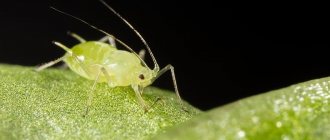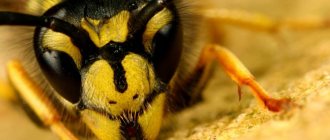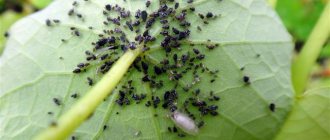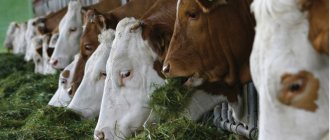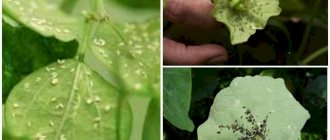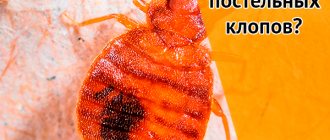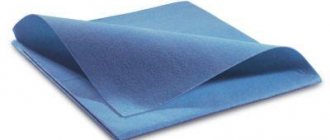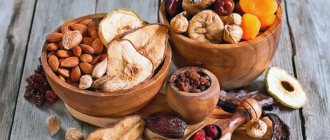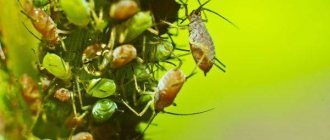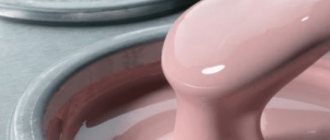Gadflies and horseflies are terribly annoying and unpleasant insects that cause great harm to farming and livestock. Livestock suffers greatly from the activities of these flies. Their constant attacks reduce milk yield and weight gain, because the same cows, instead of calmly grazing in the field, are forced to run and fight off pests. In addition, animals from contact with gadflies and horseflies can even become ill with dangerous infectious diseases, the causative agents of which are carried by these winged animals.
Therefore, every livestock breeder should know how to protect the livestock, as well as how to cure an animal that is exhausted and bitten by insects. This will be discussed further. Moreover, we will also talk about preventive measures that will help reduce the number of gadflies and horseflies in the pasture.
About flies, gadflies, horseflies, ticks
When they say that insects irritate cows, this is only one of the problems they bring.
Many diseases can spread through them. There are several examples:
- Even ordinary flies that bite cows are very dangerous as carriers of helminths, thelaziosis, and various infectious diseases.
- Horseflies not only leave painful bites on the cow's body, but also transmit filariasis and anthrax.
- Burner flies, which bloom in mid-July and are known for their painful bites, carry brucellosis and habronematosis.
- An insect such as a tick poses a great danger. Not only does it suck the cow's blood, but it also spreads mange. They usually bite the udder, external genitalia, and the area under the tail.
- Midges are especially dangerous not only because of the bites themselves, but also because of their numbers. Lumps from their bites on the udder can cause mastitis.
Important! The time when a cow regains her strength after calving is especially dangerous from the point of view of the possibility of infection by insects. Subcutaneous gadflies spread hypodermatosis. When they bite, they make an incision in the cow's skin, then lay larvae inside
They gradually penetrate inside, infecting the circulatory and digestive systems. As they spread, they concentrate at certain points, forming a colony. A boil usually occurs at this site. When they emerge as adults, they leave the cow's body. At the same time, they gnaw a way out and crawl out through it. The wounds do not heal for a long time and begin to rot
When they bite, they make an incision in the cow's skin, then lay larvae inside. They gradually penetrate inside, infecting the circulatory and digestive systems. As they spread, they concentrate at certain points, forming a colony. A boil usually occurs at this site. When they emerge as adults, they leave the cow's body. At the same time, they gnaw a way out and crawl out through it. The wounds do not heal for a long time and begin to rot
Subcutaneous gadflies spread hypodermatosis. When they bite, they make an incision in the cow's skin, then lay larvae inside. They gradually penetrate inside, infecting the circulatory and digestive systems. As they spread, they concentrate at certain points, forming a colony. A boil usually occurs at this site. When they emerge as adults, they leave the cow's body. At the same time, they gnaw a way out and crawl out through it. The wounds do not heal for a long time and begin to rot.
Thelaziosis is an infection of the eyes of cattle by helminths. The larvae mature under the eyelid and then penetrate the mucous membrane of the eye. The result of the disease can be the animal's blindness.
Caring for cows at home
It makes sense to start preparing for the summer period already in mid-March. To protect against insects, it is necessary to treat not only the cattle, but also their stalls.
On a note. An important means in the fight against blood-sucking insects can be simple adherence to hygienic standards for keeping animals.
It is recommended to clean and disinfect barns every morning and every evening.
Some breeds of cattle have natural means to combat or at least reduce the damage caused by blood-sucking insects. These include:
- Thick skin that insects cannot bite through.
- The presence of a tail with which you can fan yourself and, to some extent, repel insects.
Of course, such control methods can only be partial and do not allow you to completely get rid of insects. However, some parts of the body still remain defenseless. The udder is practically not protected from bites. Here the tail will not be able to get rid of problems.
Caring for cows at home
How to treat a cow against gadflies and horse flies
Means for such a fight can be divided into several types:
- The use of repellents helps repel insects. As a result, they should stop approaching cattle.
- The action of insecticides is organized in a different way. They are designed to kill blood-sucking insects.
On a note! This need arises with the onset of a warm period. If this is not taken care of in time, it is never too late to take the necessary measures.
In addition to those mentioned, you can consider medications that help fight itching after a bite. Some means are indirect. These include the need to comply with appropriate hygiene rules for cattle.
Folk remedies can also be used in this area, but their effectiveness is less than that of repellents from a veterinary pharmacy.
How to treat a cow against gadflies and horse flies
In this capacity the following can be used:
- Diesel fuel.
- Processing with machine oil.
- Birch tar.
- Some other products that, when applied, have a strong odor that repels insects.
Their validity period is such that they can only be used as long as they retain a strong and pungent odor.
Interesting! Here's how to treat cattle against gadflies: tar can be purchased at a pharmacy, or you can also go to a specialized store for this. Typically, an oil or water solution is used to control insects. To apply it, use a sprayer.
There is another form of its use. If animals are bathed with tar soap, this can also help in the fight against blood-sucking insects. This could be a fly repellent for cows.
However, the option under consideration has an unpleasant side effect: if tar was used, this may affect the formation of the appropriate flavor in the milk.
Additionally, this horsefly remedy for cows only works for a very limited time. As a rule, no later than four hours later, the effect of using tar disappears.
To combat insects, some farmers use diesel fuel. This product is effective due to its pungent and unpleasant odor. Unfortunately, if applied, the smell affects not only the flying bloodsuckers, but also the cow itself. Due to this circumstance, it is not recommended to use diesel fuel too often for this purpose.
On a note! Typically, this substance is coated on various areas of the skin of cattle. It is believed that it is necessary to treat only that part of the body where the cow cannot fan herself with her tail. This is how you can treat cows against gadflies.
The listed folk remedies have an important drawback: it is not recommended to smear the udder with them. Here is an example of a folk remedy that can help in this case: for this purpose, it is recommended to mix one part of shampoo with two parts of vegetable oil. At the same time, you can take any shampoo and oil that you have in the house. Instead of shampoo, if it is more convenient, it is permissible to use bath foam.
Important! You need to mix thoroughly. It is necessary to obtain a homogeneous mass with which the cows will be processed. This mixture can be used to lubricate the entire animal and, in particular, the udder.
After the cow comes from the pasture, you need to wash off the composition with warm water.
This mixture can be used to lubricate the entire animal and, in particular, the udder. After the cow comes from the pasture, you need to wash off the composition with warm water.
The effectiveness of the method in question is approximately 80-90%. The composition repels gray horse flies, yellow flies, mosquitoes, midges and other insects. It is not very effective against botflies, but they bite during the hottest period of the day, and during the morning and evening hours they usually do not fly. This solution should be smeared on the udder, on the face, behind the ears, “under the armpits” of the cow. Some people add vinegar to this composition, which increases the effect of this product.
Sometimes there is a need to soften the consequences of a bite and remove the itching. In this case, the following procedure may help:
- The bite site is smeared with honey.
- Cover with cabbage leaf.
- Wrap in cellophane.
On a note! This remedy not only softens the effects of bites, but also helps soften the skin of the udder during mastitis.
What are they like?
There are many types of remedies that will help if gadflies bite a cow. All of them can be divided into 2 large groups:
- Repellents. These are special substances that are applied to the animal’s body. Repellents are based on the action of specific odors that repel various insects. They do not kill gadflies, horse flies and other pests, but only scare them away. Most products affect the insect's strong sense of smell and disorient it. Repellents include folk remedies, as well as chemicals. They are safer, but cannot guarantee long-term and complete protection.
- Insecticides. For the substances to begin to act, it is necessary to apply the product to the skin of cattle. Insecticides can have intestinal, contact or systemic effects. They are characterized by long-lasting action and high efficiency.
On a note!
Basic hygiene rules will help to strengthen protection and prevent attacks by gadflies and horseflies on animals. Insects identify prey by smell, so cows should be bathed regularly and kept as clean as possible.
Cow and gadfly
Popular
VASILY GENERALOV: “The driver for the development of medical technologies is two things: manufacturers of heavy medical equipment and manufacturers of pharmaceutical products. They dictate the research, they have the financial resources to then offer these programs to doctors. And, of course, this intervention is ideological - it slows down the development of real medicine.”
ROSTISLAV ISHCHENKO: “The delay in the construction of Nord Stream 2 gave Ukraine at least some negotiating position in trade regarding gas transit through it. That is, regarding the extension of the contract, the signing of a new contract, or the formalization of relations already on the terms of European standards, which Ukraine has assumed obligations, but for which it is not yet ready.”
EVGENY SATANOVSKY: “You can’t overthrow Assad in Syria, nothing will happen. The Saudis, the Emirates, and Qatar even understood this - everyone understood this, except for now the United States Congress. Which speaks especially well of democracy.”
How to understand that an animal needs help?
We talked about the means of protecting cattle from horse flies and gadflies. Now let's touch on another important point. It concerns the fact that any livestock breeder needs to monitor the condition of the livestock. Let's say you notice that there are a lot of gadflies and horse flies. The livestock was immediately treated with effective means. After this, insects began to pester your animals less.
But before the use of repellents and insecticides, a cow or bull could get badly bitten. Gadflies could have time to lay eggs, and the larvae could penetrate their bodies. Therefore, animals need to be examined regularly. The following symptoms should especially alert you:
- Cattle behave restlessly in the pasture.
- Cattle lose weight sharply.
- There is a drop in milk yield.
- On the body of animals there are swelling and painful conditions in individual skin areas, as well as hard formations (ulcers) on the back and lower back, with tiny holes.
- The wool is constantly dirty (as a rule, the reason is abundant discharge of pus from the nodules, where the larvae of the gadfly sit).
Bed bug
Bed bugs are not suspected of spreading any diseases. However, they should be feared because of the great discomfort they create for people living in their chosen territory. Adult bedbugs and their larvae feed on human blood. They do not attack animals, since their thick fur prevents them from getting close to the skin. Young children, if there are any in the house, are most often at risk. If they are not there, then everyone else is. It all depends on the size of the bedbug population and their appetite.
During the night, the bug feeds repeatedly. It crawls over a person’s body, leaving characteristic bite trails. After the anticoagulant he injected stops working, the wounds begin to itch.
When morning comes, the bug hides in the joints of furniture parts, in bed linen, books, cracks in electrical appliances and other hard-to-reach places.
If you don't know, you might not even notice them. look like flat brown peas. The photograph shows what bedbugs look like, but it is a strong magnification. Their actual size is up to 4 mm. It is very difficult to understand that this is an insect and not just a dirty spot. Neither his head nor his paws are visible. A bug that has fed on blood greatly increases in size.
Getting rid of bedbugs is difficult. Even leaving the apartment for a long time is unlikely to help, since these bloodsuckers are capable of falling into suspended animation for several months and waking up when their owners return.
Domestic cockroaches are considered the natural enemies of bedbugs, but it’s up to you to decide whether to get them or not.
To prevent bedbugs from settling in your apartment, it is necessary to maintain strict home hygiene - regularly carry out wet cleaning, vacuuming, boiling and ironing bed linen, as bedbugs love to lay eggs in the folds of sheets, duvet covers, pillowcases and mattresses. It is advisable to place fresh herbs in closets and beds every year - wild rosemary, wormwood, tansy, calamus, wheatgrass roots and pyrethrum chamomile. If at least one bedbug is detected, all items in the room should be treated as soon as possible with ammonia, vinegar, turpentine, kerosene, acetone or denatured alcohol. Domestic blood-sucking insects cannot tolerate these odors. They also do not tolerate sunlight, so try to place pillows and mattresses on the balcony more often in the summer. If at least one bug appears, then during such an assault it will not linger in your house, much less leave offspring, but will look for another, quieter haven.
Bedbugs get into apartments along with furniture, books, things brought from vacation, etc. If there were bedbugs in the hotel, then there is a high probability that they will get into suitcases and bags. In addition, bedbugs enter apartments through ventilation openings.
Aerosols, sprays
As already noted, for therapeutic and prophylactic purposes, insecticidal aerosols and sprays are very often used to treat animals.
The most effective remedies for ticks, midges, midges, horse flies:
- Alezan.
- Extrasol.
- Oksarep.
- Centaur.
Spray Extrazol Sprays
are very convenient to use, but, like water-soluble insecticidal and acaricidal preparations, they do not have a prolonged effect. Therefore, treatment of cows must be carried out systematically, adhering to the frequency and dosage specified in the instructions.
Bees, wasps, bumblebees
A place stung by a bee (or other stinging insect) instantly, literally before our eyes, becomes red and swollen. The most dangerous are bites to the face, neck, and lymph node area.
(in the armpits): Quincke's edema may develop and anaphylactic shock may occur.
First thing after being stung by a bee, wasp or bumblebee
, you need to try to remove the insect sting from the wound. At the same time, you need to try not to squeeze the poison into the wound. If there is no sting, simply squeeze the poison out of the wound and treat the bite site with any antiseptic. It would be a good idea to take an antihistamine and, if you feel unwell, consult a doctor.
Prevention measures.
Bees, wasps and bumblebees love everything bright and sweet. So if you are going on a picnic, and there are a lot of stinging insects in the place where it will be held, do not get carried away with clothes with “flashy” colors, and keep food in special closed containers.
What to do if there are gadflies and horse flies at your dacha?
Gadflies and horseflies are very often confused, and they are classified as flies that are very annoying, bite painfully and unpleasantly. But this is not entirely true, horseflies bite, and gadflies rarely pester humans.
Horseflies are large (up to 3 cm) blood-sucking flying insects.
So a female can drink up to 20 mg of blood in one approach, this is more than 60-70 mosquitoes, and the most unpleasant thing is that with a bite they can introduce various infections, for example, polio, anthrax, tularemia. The bites themselves are very painful and often swell greatly. Only females bite, and only after they are fertilized; males feed on plant nectar and sugary secretions of other insects. A hungry female, in order to preserve and feed her offspring, attacks humans and animals from early morning until the end of twilight; they are active not only in sunny weather, they hunt even in rain. In addition to humans, they are also interested in large livestock, but they do not neglect small animals and even birds. At the moment of sucking, the insect does not perceive any threat, as if going blind, hence the name, although while searching for a victim they can find it at a distance of up to 1000 m.
What to do if you are bitten by a horsefly
Before they start sucking blood, horseflies make several tests in search of the sweet spot, usually make a few circles and then attack. Horseflies love moisture, so they often settle near bodies of water, even artificial and very small ones, they often fly as if they are jumping right on the surface of the water, they prefer a wet body, so only those who have swam or sweated are at risk. Not active indoors or in the dark. If the horsefly does bite, the bite site should be rinsed well with water, preferably with an antiseptic; the swelling can be removed by applying ice or something cold; for relief, you can also wipe with a soda solution or potato pulp. It is also better to take an antiallergic drug.
Gadflies are a danger to animals
How to get rid of these biting flying insects?
You can use ready-made light traps on the site, you can hang adhesive tape on the lamp yourself, it is better to keep the site and your animals clean, make a good drainage system so that there is no standing water, use repellents. But if these insects are still very annoying, we recommend that you carry out a comprehensive treatment of the area; gadflies and horseflies, no less dangerous ticks, as well as garden pests will no longer bother you. Order treatment from certified exterminators from the Green-Profi company!
With the onset of summer, residents of rural and suburban areas have problems in the form of annoying buzzing and flying guests. The most unpleasant of them are horseflies, which look like a fly, but are much larger in size. Their particular harm lies in the fact that they bite very painfully and drink a large amount of blood - tens of times more than mosquitoes. Horseflies attack animals much more often than people, thereby causing great damage to agriculture.
The fight against horse flies can be of two types: protective and large-scale (destruction and reduction of the insect population). To protect against horse flies, people wear thick fabric clothing that covers the entire body and a hat with a protective net, which is not very convenient in the hot season.
Various sprays, creams, aerosols and gels are also used to repel insects.
A more radical method of combating horseflies is to use large-scale means and techniques. Horseflies are survived from the area by creating conditions for them in which they cannot survive: swamps are dried out, small bodies of water are disposed of, and the banks of large bodies of water are cleared of vegetation. This significantly reduces the places where the pest can live and reproduce. Modern chemicals, various traps and traditional methods are also used.
Special preparations
Manufacturers offer a wide range of products against the bites of gadflies and horse flies. They are based on the action of chemical insecticides, which not only repel pests, but are also capable of completely destroying them.
Cyflunite
An effective way to protect a cow from gadflies and horse flies.
- Can be used as a means of control or as a preventive measure.
- The active substance is cyfluthrin, which belongs to the group of synthetic pyrethroids. Effective against gadflies, horseflies, midges and mosquitoes. Has contact and repellent effects.
- It is better to entrust the processing to a veterinarian or qualified specialist.
- The cost of a bottle with a dispenser is about 450 rubles. Protects for 1-1.5 months.
Review
I've heard a lot of positive reviews about the drug. We decided to treat the cow against gadflies and horseflies at home with Cyflunit. No specialist was invited. The cows were grazed without changing the schedule, all day in the heat. The action lasted for 3 weeks. During this time, there were frequent and heavy rainfalls, which could reduce the effectiveness of the product.
Olga, Lipetsk region
Sebacil
A special emulsion that protects against ectoparasites. The drug must be applied to the cow against gadflies and horse flies. Apply Sebacil only to clean animal skin. The active substance is phoxim. Has a contact effect. It remains on the surface of the body for a long time and provides reliable protection for livestock. Sold in veterinary clinics. 1 bottle should be diluted in a bucket of water and treated with the animal.
Aversect
An effective product that has a pronounced contact effect. If precautions are taken and instructions for use are strictly followed, it does not have a negative effect on people and animals. 100 ml of the product costs about 500 rubles.
The active component is aversectin C - a complex that protects even if a subcutaneous gadfly appears in cattle, and also repels flying blood-sucking insects. Can be used as a prophylactic agent during spring treatment of cows.
Special insect repellents
Review
Treatment of cows against subcutaneous gadflies is carried out regularly in our region. Paramedics use only Aversect. Treatment helps not only to cure the animal of hypodermatosis, but also to prevent further infection.
Epifantsev, Pskov
Sanoflax, Butox, Extrazol, Centaur and some other drugs are also very effective. You can also choose a convenient release form. Emulsions or sprays are produced to treat cows against gadflies and horse flies.
Folk remedies
The use of chemicals cannot guarantee complete safety for humans and the animals themselves, so simple recipes for home remedies are used. To protect cows, it is not necessary to buy expensive drugs; you can make do with the means available in every home.
Tar
A proven old remedy that can be bought at a pharmacy or specialty store. Use an oil or water solution. For the product to start working, spray the cow against gadflies with a solution from a container using a spray bottle. You can also bathe animals using tar soap. The cost of 1 bottle is about 60 rubles. The use of tar can negatively affect the taste of milk, so this method of getting rid of gadfly and horsefly bites is used very rarely.
If there is only one or two cows on the farm, then tar can be considered effective, but for larger livestock it will be necessary to look for more extensive methods. After treatment, the effect lasts no more than 3-4 hours. This is the maximum, provided there is complete absence of contact with water.
Soap and vegetable oil
For a liter of water, you need to dissolve 1 bar of laundry soap and add 100-150 ml of regular vegetable oil. Spray the body of cows with the prepared product. The oil coats the skin with a protective film and reduces the spread of odor.
Diesel fuel
An effective folk remedy for cows against gadflies and horse flies due to its strong, intrusive odor. The cow also feels it, so with frequent use the animal will feel discomfort. You need to coat with diesel fuel those areas of the body where the cow's tail does not reach. In nature, the animal itself drives away biting insects with its help.
We tried a lot of folk remedies to protect cows from gadflies and horse flies. The herbs helped, but not for long. Then we tried diesel fuel. They rubbed the udder, neck, and areas behind the ears. For the first 2 hours the bloodsuckers didn’t even fly up. Then they gradually reopened their hunt. I can conclude that diesel fuel really does repel gadflies and horse flies, but only for a very short time.
Herbal infusions
Getting rid of gadflies and horse flies using herbal infusions is completely safe and does not affect the quality of milk. In order to prepare them, you can use any type of plant separately or in combination. Laurel, tansy, mint or wormwood will help repel blood-sucking pests.
Thus, to find the ideal remedy for cattle against gadflies and horseflies, you will have to try various options. The problem cannot be ignored, since the attack of pests will affect not only the general condition of the cows, but also the quality and quantity of milk yield.
apest.ru
Preventive measures
Don't forget that prevention is the best defense. It is proper care of the place where cattle are kept and care for the animals themselves that will allow you to successfully fight spider flies, horseflies and other harmful flies. So try:
- Maintain cleanliness in areas where livestock are kept and grazed. Remove manure, change bedding and water regularly. Don’t forget to periodically clean the barns and wash drinking containers.
- Clean the fur and skin of livestock as often as possible. To do this, it is best to use a special brush and products.
- Remove dense and tall vegetation. By mowing excess grass, you reduce the number of places where gadflies and horse flies can hide or breed. Thus, there will be fewer dangerous insects near the pasture and farm.
- Do not keep extra containers of water. Insects love humidity and they really like all kinds of buckets, baths, barrels and other containers with liquid.
- Regularly carry out disinfection with special means in pastures, barns and premises where farm animals are kept.
DIY plastic bottle trap for horseflies
Any plastic drink bottle will work to create a trap. Using scissors, cut off the top of the plastic bottle so that the result is a long bottom part and a slightly shortened top part of the bottle.
The neck of the bottle should be turned over and inserted into the bottom of the bottle. For strength, both parts of the trap must be fastened together with a stapler or glue. Instead of a stapler and glue, you can use waterproof tape and electrical tape. When connected, both structures must fit snugly against each other.
To prepare the bait you will need water, sugar and fruit. Pour 50-60 g of sugar into a saucepan and add water until it covers the sugar. The resulting mixture is thoroughly mixed and brought to a boil. The pan is removed from the stove and mixed thoroughly, the resulting syrup is put in a cool place to cool.
The syrup must be carefully poured into the trap and small pieces of apple or peach added to it. You can use wine, honey and even pieces of meat as bait. The finished trap should be fixed at a height of no more than 1.5 m. The trap is good for catching almost all insects. To prevent beneficial insects from flocking to the bait, you can add a few tablespoons of vinegar to the bait. The smell of vinegar will repel bees.
It is important to remember that these traps are intended for single use. It is not recommended to remove horse flies and other insects from the bottle to free the trap
Once the trap is full, it should be disposed of and a new trap constructed.
You can increase the effectiveness of the trap by periodically warming the trap in your hands.
Protection from bloodsuckers in nature
When going to the forest or lake in the summer, you must always have a bottle of mosquito repellent with you. Gnus is a general term for all dipterous blood-sucking insects that live among grass, trees and shrubs.
Pharmacies offer a wide range of the most diverse and effective insecticides and repellents that repel blood-sucking insects for a long time and have proven themselves to be “DETA”, “Repekul”, “Benzphthalate”, “Taiga”, “Benzimine”, “Solarol” and others. They are available in the form of aerosols, ointments, emulsions and lotions. However, the effect of all drugs is short-lived. After about an hour, depending on various factors, the smell subsides and the insects begin to attack again. The difference between insecticides and repellents is that the former destroy insects and are extremely toxic, while the latter only repel midges.
Despite the fact that chemical products are very convenient and effective, not all of them are equally safe - most of them contain the poison dimethyl phthalate. This substance is strictly contraindicated for young children and pregnant women. It is better for this category of people to use natural oils of clove, camphor, anise or lavender.
Dangerous ticks
Ticks are blood-sucking insects. They parasitize on the skin of animals. They insert their proboscis through the skin, often painlessly, by injecting an anesthetic substance. Having had enough blood, they lay eggs, about 3 thousand pieces. Larvae emerge from them. They are similar to adult insects, but smaller in size, they have 3 pairs of limbs.
Larvae, like adult insects, attach themselves to animals and humans and suck blood. It is difficult to fight them because they are barely noticeable. They are not affected by any liquid: they are not afraid of flooding and develop well under a layer of soil.
- Ixodid ticks are especially dangerous. Their size is 2.5 cm. Their body is covered with a chitinous layer. They can parasitize animals for up to 3 weeks. They are especially prolific. The clutch consists of 17 thousand eggs. The bite is painless.
- Severe itching and pain when bitten are caused by argas mites. They are small in size, the body is leathery, the head is recessed into the body.
- Oribatid ticks do not bite animals, but they are carriers of helminths. If cows eat them along with grass, there is a risk of helminthiasis.
- The most common is the pasture tick. The insect is distinguished by its color: dark brown body, light brown head and proboscis. It is a carrier of encephalitis, brucellosis, and fever. Dangerous for both animals and humans.
Advice from experienced livestock breeders
A good folk way to combat blood-sucking insects is to use herbal infusions. This method has the advantage that it does not have a negative effect on the cow and cannot affect the quality of the milk.
To prepare infusions, you can use mint, tansy, bay or wormwood. You can take these plants in arbitrary combinations. They can not only repel insects, but also treat bites.
When choosing the right options for bloodsucker control to protect your pets, a variety of methods can be used. They all have their own characteristics that you need to know in order to make the right choice.
2.3 4 votes
Article rating
